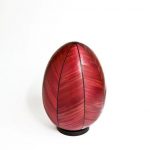APR – Jump into Spring with Lison de Caune’s Easter Egg !
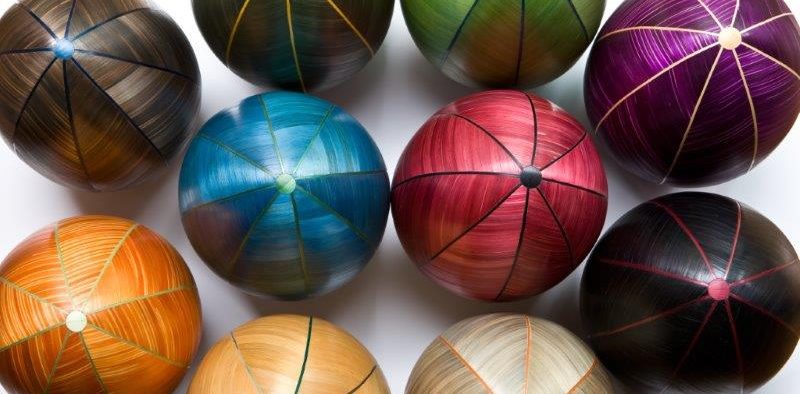

LISON DE CAUNES
STRAW MARQUETRY

STRAW MARQUETRY:
DESIGN AND DESIRE
Straw marquetry is a childhood memory for Lison de Caunes. She first discovered the material in her grandfather André Groult’s workshop, a well-known decorator and one of the biggest names of the Art Deco movement. After studying book-binding, she returned to straw marquetry and revolutionised the technique using binding tools such as an ivory folding tool that has used throughout her career and still uses today.
She devoted her early years as a straw marqueter to restoring masterpieces from the 18th, 19th and 20th centuries, before deciding to dedicate all of her time to original pieces of furniture, objects and wall coverings. She worked under her own name, Lison de Caunes Créations, as well as in collaboration with some of the world’s most renowned designers including Peter Marino, Cabinet Alberto Pinto, Maria Pergay, Hubert le Gall, Vincent Darré and Mathieu Lehanneur.
A number of luxury brands have commissioned her to create pieces for their flagship stores: the Guerlain parfumerie on the Champs-Élysées, the Louis Vuitton store on Place Vendôme, the Four Seasons Hotel in New York, and many others.
Throughout the years, Lison de Caunes has continued to innovate and develop her craft, with her technique remaining entirely artisanal. Shimmering colors, poetic decors, textural effects… She has wonderfully modernised the art of straw marquetry. Associated with gold leaf, mother-of-pearl and molten glass inlays, she transforms this ancient material into precious objects, audacious formal innovations, and trendy motifs. On a dresser, straw marquetry becomes three-dimensional thanks to the “pointe-de-diamant” technique. On wall panels, it becomes a milky way of mother-of-pearl, aluminum stars and laser cut constellation inlays.
Lison de Caunes has also worked with Ozone on their minimalist lighting design to create bedside lamps, ceiling lights, and lamp stands.

LISON DE CAUNES CREATIONS

Since 2015, Lison de Caunes has been working on her own creations. Sold under the name Lison de Caunes Créations, they are available to order from her workshop.
From coffee tables to screens and decorative objects such as trays, cabinets and storage boxes, Lison de Caunes uses straw marquetry on everyday decorative pieces and furniture, giving them a unique and timeless elegance.
NEW YORK “PAR EXCELLENCE” SHOWROOM
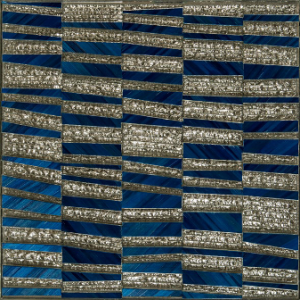
Initiated by Charles Jouffre’s tapestry Ateliers, the New York showroom “Par Excellence” showcases the creations of exceptional French craftsmen and crafstwomen. Lison de Caunes shares the Chelsea space with other internationally renowned artists in decoration, design and decor: Declercq (upholstery), Les Ateliers Saint-Jacques (iron workshop), Ozone (lighting), Meljac (luxury switches), Les Marbreries de la Seine (marble) and the Manufacture de Tapis de Bourgogne (tapestry).
A BRIEF HISTORY
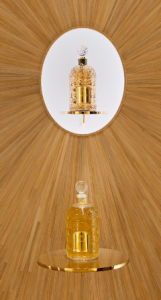
Before becoming an art form, straw marquetry had long been an inexpensive alternative to wood marquetry. Used as a low-cost replacement for wood by 17th century cabinet makers in exotic inlays, it was also a pastime and a welcome source of revenue for prisoners of war and English and French convicts.
Straw marquetry has seen many periods of success: during the 18th century in France, the Art Deco period (with its two leading designers, André Groult and Jean-Michel Frank), and during the 1950’s, thanks to the innovative French decorator Jean Royère.
Throughout the ages, the technique has remained entirely manual. It consists of covering a piece of furniture or an object (wood, metal, glass, cardboard or paper mache) in ornamentation made out of thin straw, either natural or dyed. The straw is flattened and glued strand by strand with wood glue to create the intended design. This work requires patience and attention to detail.
The raw material is rye straw. The same type of straw is used, for instance, for chair reseating. The straw is harvested once a year in Burgundy by specialized cereal growers, with two to three strands growing from each stem. Once dyed or left natural, they are manually cut open and flattened before being glued.
AWARDS
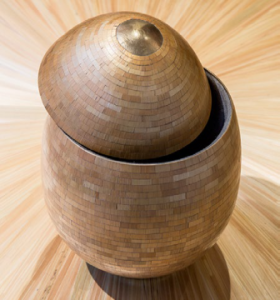
In 1996, Lison de Caunes was awarded the title of Maître d’Art. In addition, she is a member of both the Grands Ateliers de France and the Entreprises du Patrimoine Vivant (EPV). In 2010, she was awarded Chevalière de la Légion d’Honneur. She is also an expert for the Union Française des Experts (UFE).


